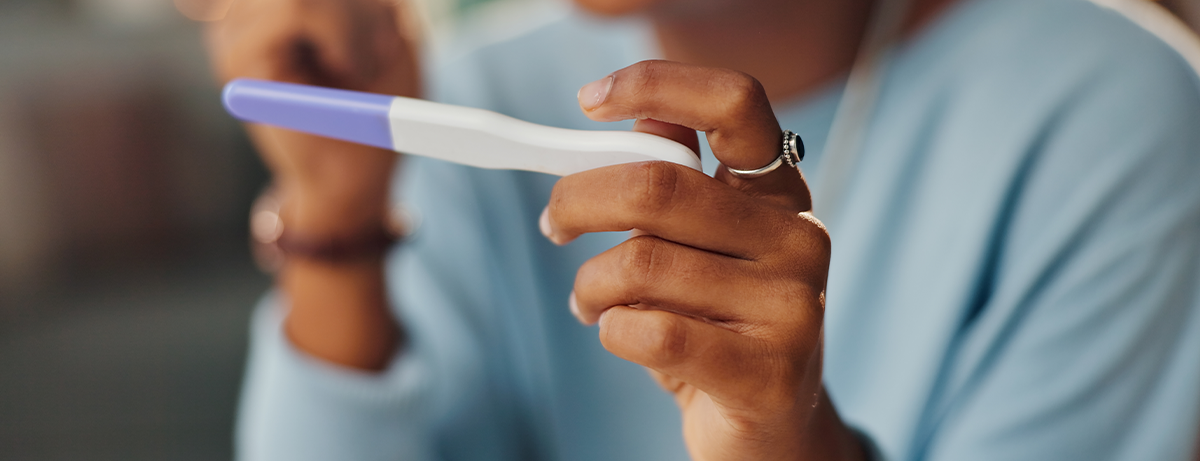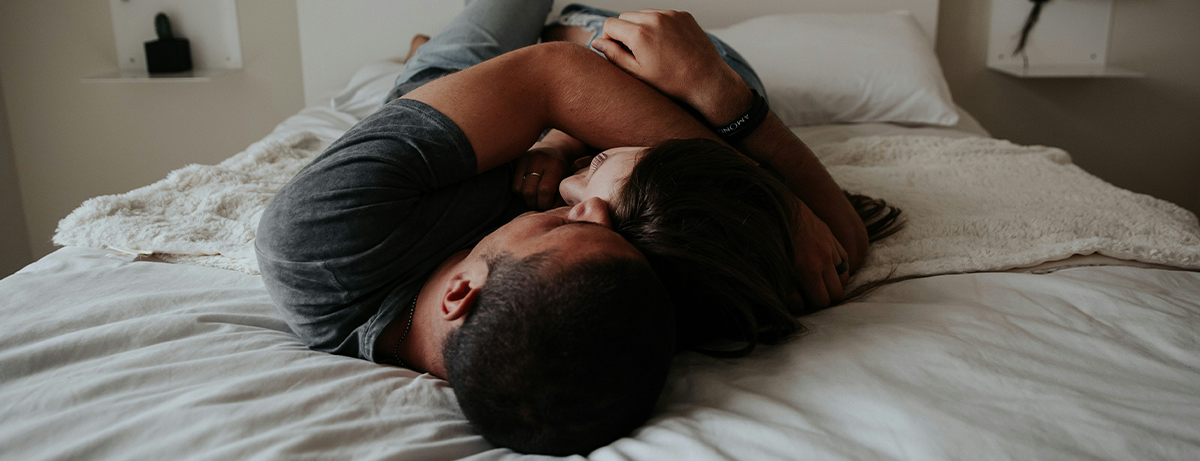15% off £25 or 20% off £35
Menopause bleeding: before, during & after

Summary
1Bleeding before menopause starts
While some women may experience their periods stopping abruptly, some find they have irregular periods for up to 6 months before their periods stop...
2What can cause bleeding during menopause?
Menopause starts when you’ve not had a period for 12 consecutive months. Even so, some women experience light bleeding or spotting after their...
3What is post-menopausal bleeding?
Vaginal bleeding after menopause is always important to have checked by your GP, but very rarely is it something serious.
Menopause is the natural process where your periods stop due to a decrease in hormone levels in your body, so you shouldn’t experience any menstrual bleeding after menopause.1,2
Sometimes, however, you might notice some light bleeding or ‘spotting’ before, during or after menopause.3 Generally, spotting during menopause isn’t a cause for concern, but you should still speak to your GP to rule out anything serious.4
There are multiple reasons why you might experience menopausal bleeding before, during and after menopause, so here, we’ll talk through everything you need to know.
Bleeding before menopause starts
When it comes to menopause, every woman is unique and will have completely different experiences. While some women may experience their periods stopping abruptly, some may find they have irregular periods for up to 6 months before their periods stop completely.5 In some cases, your periods can space out for months or even years before they stop altogether.5
The time just before menopause begins is known as perimenopause, and it’s here that you will likely start experiencing symptoms like hot flushes, night sweats and more.6

What can cause bleeding during menopause?
Menopause starts when you’ve not had a period for 12 consecutive months.8 Even so, some women experience light bleeding or spotting after their last period. You might notice a small amount of blood in your underwear or after urinating, which can vary in colour and intensity.3
Generally, the causes of spotting during menopause are nothing to worry about, but sometimes it can be a symptom of something more serious. If you are experiencing menopausal bleeding or spotting, you should visit a medical professional to find the cause. Menopausal bleeding isn’t a common sign of menopause, but there are a few reasons why you might be experiencing it. Here are 4 common causes of light bleeding or spotting during menopause:
- Perimenopause: In some cases, you might be experiencing light bleeding because you’re still in perimenopause and having irregular periods. Some months, you might find you skip your period entirely thanks to your changing hormones, and other months your period could be so light that it looks like spotting.6 The transition from perimenopause into menopause can take years, and if you’re unsure about what menopause stage you may be at, visiting your doctor can help you figure it out.
- Vaginal dryness: As your body produces less oestrogen during menopause, you might find you start to lose moisture, lubrication, and elasticity in your vagina.9 Vaginal dryness means you’re more prone to small tears or injury, particularly during sexual activity and intense exercise.10 These small tears can cause you to bleed, which may look like light bleeding or spotting.
- Vaginal atrophy: The decrease in your oestrogen levels during menopause can also lead to vaginal atrophy, where the walls of your vagina become thinner and less elastic.11 When the walls of the vagina become thinner, they are more prone to injury and tearing, which can cause bleeding as a result.10
- Side effects of HRT: Vaginal bleeding whilst on hormone replacement therapy (HRT) is common, with over 40% of women taking HRT experiencing this side effect.12 Bleeding whilst on HRT could be a sign that your treatment isn’t quite right for you, in which case, your doctor can help you find a better alternative.13

What is post-menopausal bleeding?
- Atrophic vaginitis – or vaginal atrophy, is where you experience inflammation and thinning of the lining of your vagina due to lower oestrogen levels
- Endometrial atrophy – this is where the lining of your womb thins and becomes inflamed due to lower oestrogen levels
- Cervical or womb polyps – these are small growths that often grow on the surface of the cervical canal or womb14
- Endometrial hyperplasia – this is where your womb lining has thickened, sometimes because of HRT
- Fibroids – while rare, fibroids can still appear after menopause and can cause vaginal bleeding15
Fibroids after menopause
Fibroids are small growths that grow in the walls of your uterus that appear in your later years of reproductivity, with between 70 and 80% of women affected at the age of 50.16
Fibroids can be present after menopause too, but due to the lower levels of oestrogen during menopause, if fibroids were already there, they tend to shrink in size.17 However, they can still be an issue, causing symptoms like bleeding after menopause and back pain. For some, fibroids can grow to the size of a grapefruit and be quite painful.18
The signs and symptoms of fibroids after menopause include:18
- Vaginal bleeding
- Lower back pain
- Pain during sex
- Pressure on the bladder
- Frequent need to urinate
Fibroids often go away after menopause on their own, but if you do have any of the symptoms caused by fibroids, your doctor can recommend appropriate treatment.15
The bottom line
Bleeding before, during and after menopause can happen, and usually, it is nothing to worry about. However, it is vital that you speak to your GP if you’re experiencing any bleeding during or after menopause.
While there are many possible causes, speaking to a professional can help to give you peace of mind, as well as important advice and any necessary treatment.
- https://www.nhs.uk/conditions/menopause/
- https://www.nhs.uk/conditions/post-menopausal-bleeding/
- https://www.jeffersonhealth.org/your-health/living-well/is-spotting-normal-during-perimenopause-and-menopause
- https://www.mayoclinic.org/diseases-conditions/menopause/expert-answers/bleeding-after-menopause/faq-20058396
- https://www.contemporaryobgyn.net/view/perimenopausal-bleeding-whats-normal
- https://www.hopkinsmedicine.org/health/conditions-and-diseases/perimenopause
- https://www.nhsinform.scot/healthy-living/womens-health/later-years-around-50-years-and-over/menopause-and-post-menopause-health/menopause
- https://www.nia.nih.gov/health/what-menopause
- https://www.nhs.uk/conditions/vaginal-dryness/
- https://www.nhs.uk/common-health-questions/womens-health/what-causes-a-woman-to-bleed-after-sex/
- https://www.ruh.nhs.uk/patients/Urology/documents/patient_leaflets/Atrophic_Vaginitis.pdf
- https://linkinghub.elsevier.com/retrieve/pii/S0378512209000991
- https://www.nhs.uk/conditions/hormone-replacement-therapy-hrt/side-effects/
- https://www.ncbi.nlm.nih.gov/books/NBK562185/
- https://www.nhs.uk/conditions/fibroids/
- https://www.ncbi.nlm.nih.gov/books/NBK546680/
- https://www.aafp.org/pubs/afp/issues/2017/0115/p100.html











